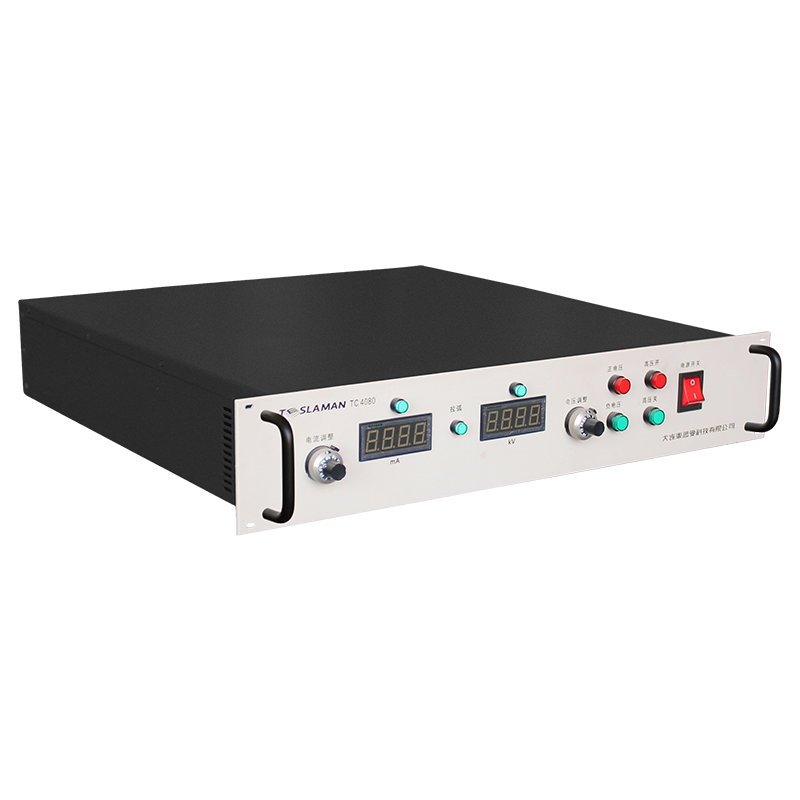Neutron Energy Stability Control of High-Voltage Power Supplies for Neutron Sources
As critical devices for nuclear physics research, material analysis, and medical irradiation, the stability of neutron energy output from neutron sources fundamentally depends on the power quality of accelerator high-voltage supplies. This paper systematically analyzes the quantitative impact of power supply parameters on neutron energy spectrum distribution from perspectives of electric field construction, beam transport control, and multi-physics coupling, proposing comprehensive stability enhancement solutions.
1. Correlation Between Power Supply Characteristics and Neutron Energy Broadening
Neutron energy dispersion ΔE/E strictly correlates with voltage fluctuation δV/V: ΔE/E=2δV/V+(δt/t)^2 (t: acceleration time). When power supply ripple exceeds 0.02%, the energy broadening of 14 MeV neutrons deteriorates from ±0.3% to ±1.5%. Bipolar superposition topology with 10^14Ω-class high-resistance voltage dividers improves DC voltage short-term stability to 5×10^-6/10min. Experiments demonstrate this approach compresses the full width at half maximum (FWHM) of D-D reaction-based compact neutron sources to 72 keV (baseline: 220 keV).
2. Rapid Compensation Under Dynamic Load Conditions
Pulsed beam extraction induces sudden load variations (ΔI/I≈10^-3/μs), causing acceleration gradient deviations. Magnetic coupling resonant compensation circuits achieve 200kV-level closed-loop correction within 50μs (adjustment accuracy <0.005%). This reduces neutron yield fluctuation from 12% to 1.8% under transient conditions, meeting stringent timing consistency requirements for prompt gamma-ray correlation measurements.
3. Multi-Physics Interference Suppression
Temperature drift (ΔT=±15℃) creates ±0.03%/℃ gain errors in resistor networks, leading to 0.5%/℃ systematic neutron energy shifts. Distributed temperature sensor arrays with PID-Fuzzy hybrid algorithms suppress voltage temperature coefficients to 2×10^-6/℃ within -40~70℃. Mechanical vibration (5-2000Hz, 0.5g RMS)-induced contact potential fluctuations are controlled to <0.1mV via 3D damped suspension systems, corresponding to <0.01% neutron energy jitter.
4. Digital Cooperative Control Architecture
An FPGA-based real-time spectrum monitoring system (1MHz sampling rate) forms a feedforward loop with the power supply, triggering voltage correction within 100μs when neutron energy deviation exceeds ±0.2%. In 14 MeV proton-lithium target experiments, this achieves 99.7% neutron yield stability over 8 hours. Deep reinforcement learning predicts optimal compensation values, reducing recovery time by 60% under sudden load impacts.
5. Topology Innovation for Extreme Conditions
All-solid-state LCC resonant converters for fusion neutron sources (100kV/10mA steady-state) demonstrate <0.001% voltage drift during 72-hour operation. Pulsed neutron sources (10ns pulse width, 1kHz repetition) combining Marx-Bank and magnetic switches deliver >100kV/ns rise-time pulses, reducing transient flux uncertainty to 0.8%.
Conclusion
Neutron source high-voltage power supplies have surpassed conventional engineering limits, advancing toward intelligent and extreme-performance designs. Future breakthroughs require radiation-hardened wide-bandgap semiconductors, quantum voltage reference transfer, and multi-node cooperative control to achieve meV-level energy resolution.




















